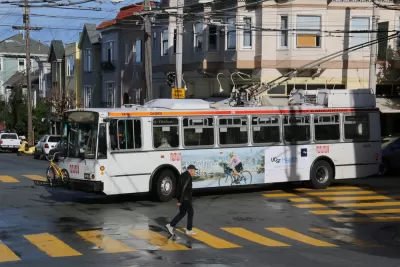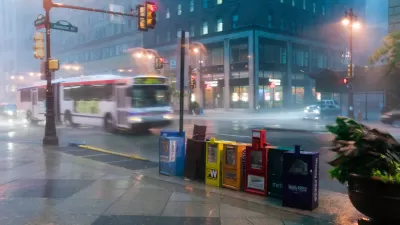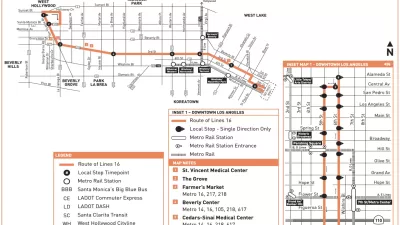The definition of "On Time" varies from transit system to transit system, making comparisons difficult. When compared using the same standards, a more accurate portrait of transit performance emerges.

A recent post on the TransitCenter website catches transit systems moving the goal posts when it comes to measuring on-time performance. Transit officials set their own performance standards, without referencing any national standard, and can change those standards when its expedient to do so.
"Baltimore’s MTA recently came under fire by the Baltimore Sun and advocates for doing just that last year, after it boasted of improving its on time performance following the 2017 redesign of the bus network in Baltimore," according to post.
To cut through the fog of self-serving arbitrariness, the team at TransitCenter chose one universal standard, "[using] publicly available open data to look at 2018 transit agency performance, and picked an (ambitious) standard used by SFMTA: 'On Time' definition of 1 minute early, 4 minutes late."
Once the standard is set to a universal scale, the on-time performance of most systems declines, but a few trends in quality performance also emerge. "The systems that rise to the top tend to be in less congested cities (no surprise there – congestion is the primary source of bus delays). The top three cities for reliability saw smaller ridership losses on their bus system from 2016-2017 than the national average," according to the article.
FULL STORY: Your Bus Is On Time. What Does That Even Mean?

Alabama: Trump Terminates Settlements for Black Communities Harmed By Raw Sewage
Trump deemed the landmark civil rights agreement “illegal DEI and environmental justice policy.”

Planetizen Federal Action Tracker
A weekly monitor of how Trump’s orders and actions are impacting planners and planning in America.

The 120 Year Old Tiny Home Villages That Sheltered San Francisco’s Earthquake Refugees
More than a century ago, San Francisco mobilized to house thousands of residents displaced by the 1906 earthquake. Could their strategy offer a model for the present?

In Both Crashes and Crime, Public Transportation is Far Safer than Driving
Contrary to popular assumptions, public transportation has far lower crash and crime rates than automobile travel. For safer communities, improve and encourage transit travel.

Report: Zoning Reforms Should Complement Nashville’s Ambitious Transit Plan
Without reform, restrictive zoning codes will limit the impact of the city’s planned transit expansion and could exclude some of the residents who depend on transit the most.

Judge Orders Release of Frozen IRA, IIJA Funding
The decision is a victory for environmental groups who charged that freezing funds for critical infrastructure and disaster response programs caused “real and irreparable harm” to communities.
Urban Design for Planners 1: Software Tools
This six-course series explores essential urban design concepts using open source software and equips planners with the tools they need to participate fully in the urban design process.
Planning for Universal Design
Learn the tools for implementing Universal Design in planning regulations.
Clanton & Associates, Inc.
Jessamine County Fiscal Court
Institute for Housing and Urban Development Studies (IHS)
City of Grandview
Harvard GSD Executive Education
Toledo-Lucas County Plan Commissions
Salt Lake City
NYU Wagner Graduate School of Public Service





























